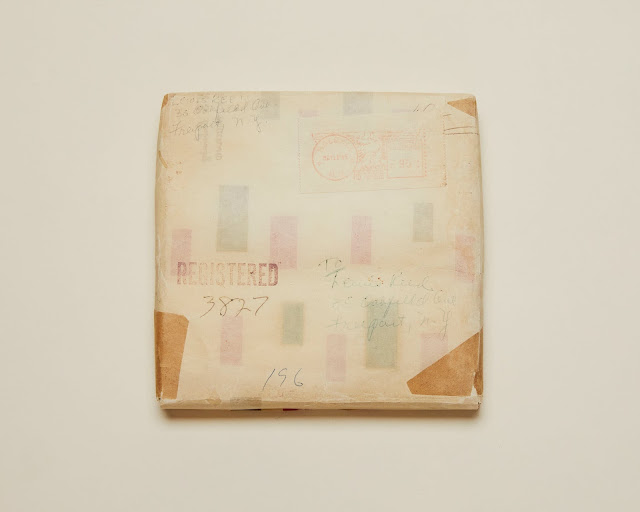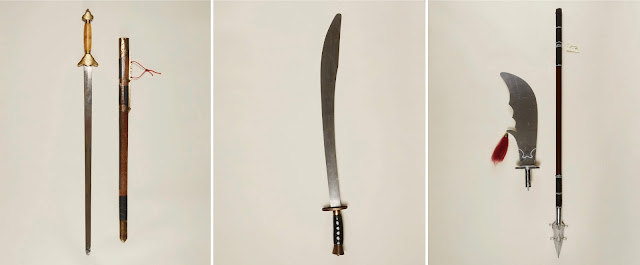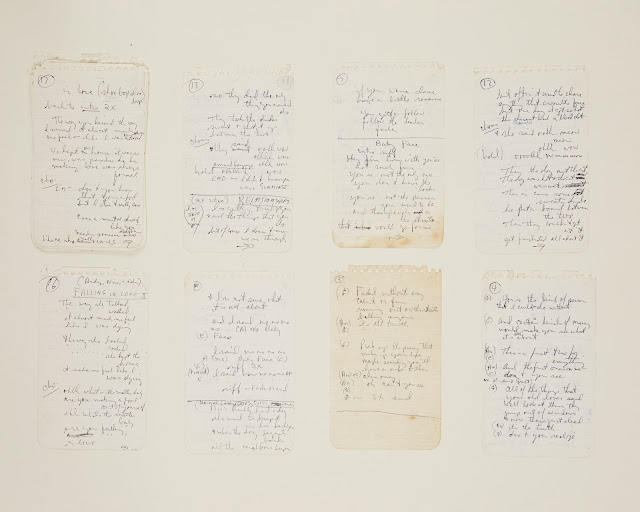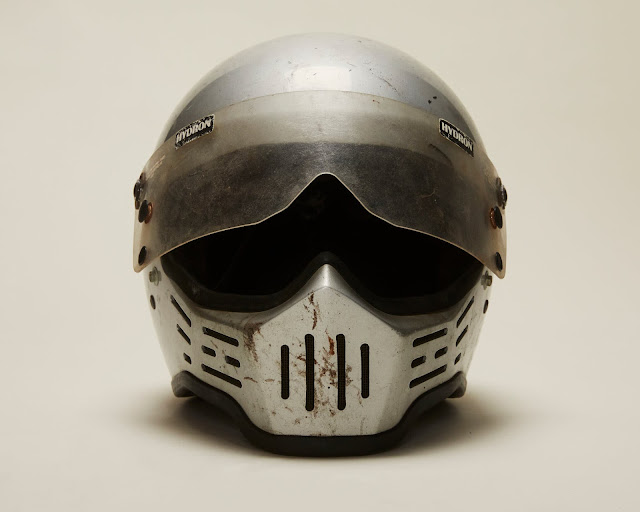Her tongue-in-cheek approach to sustainable fashion sends a serious message: The only way to combat overconsumption is to produce less and repurpose more.
 Nicole McLaughlin in her Brooklyn studio. Her designs are fashioned from repurposed materials, such as outdoor recreation gear.
Nicole McLaughlin in her Brooklyn studio. Her designs are fashioned from repurposed materials, such as outdoor recreation gear.By Natalie Berry
Nicole McLaughlin, a conceptual artist focused on sustainability, loves coming up with names for her creations. A beanie made from jeans is a “jeanie.” Shoes constructed from sushi are “shoeshi.” A bra whose cups are two bagels, a “bragel.”
Though her projects may be more tongue-in-cheek than others in the world of environmentally conscious design, the message is the same: The only way to combat overconsumption is to produce less and repurpose more. Most of the clothing and fabrics discarded in the United States end up in landfills; the volume of textile waste increased by more than 800 percent from 1960 to 2015, according to the Environmental Protection Agency. Ms. McLaughlin, through her designs and advocacy, wants to encourage people to repurpose the items they buy instead of throwing them out.
In addition to scavenging for materials in her home, she trawls thrift shops, resale websites and textile disposal sites for discards that can be upcycled. “When I look at material that already has shape or structure or a seam or zipper, it gives me a jumping-off point,” Ms. McLaughlin, 28, said in a video interview from her studio in Brooklyn’s Bushwick neighborhood. “There’s no rule book in upcycling. Every material is a challenge as to how I’m going to disassemble it and make a new thing out of it.”
 Her studio includes a climbing wall.
Her studio includes a climbing wall.
 Ms. McLaughlin grew up in an outdoorsy family and has been climbing since 2016.
Ms. McLaughlin grew up in an outdoorsy family and has been climbing since 2016.Credit...
Credit...
Her creations have earned her recognition in the music and fashion industries. ASAP Mob and J Balvin are fans. Jhay Cortez has pulled pieces for his music videos. Pharrell Williams wrote the foreword to a 2021 book that showcases Ms. McLaughlin’s designs. She has worked with numerous brands including Puma, Calvin Klein, Prada and Hermès. Recently, Gucci commissioned her to recreate its top-handle Diana bag; she used old volleyballs, rather than new leather, for the body.
“People wanted to buy the bag, which wasn’t the goal,” Ms. McLaughlin said. Alessandro Michele, of Gucci, had asked her and five other artists to create the designs to help promote the brand’s heritage. But, she said, if repurposed volleyballs could get consumers excited, maybe luxury brands might consider other ways to incorporate recycled materials.
Ms. McLaughlin was raised in Verona, N.J., in an outdoorsy and creative family. Her father was a carpenter when she was growing up, and her mother is an interior designer.
She went on to study photography and digital art at East Stroudsburg University of Pennsylvania. After earning her bachelor’s degree, she began a graphic design internship at Reebok in Boston, Mass., working with the company’s logos. Eventually she was hired full time.
During her off-hours, she began experimenting with discarded shoe uppers, soles and laces, gluing, stapling and sewing them together in unexpected ways. “I wasn’t on a mission to be a sustainable designer. It was purely out of exploration,” she said. “I felt inherently guilty about working in an industry that wastes all this stuff, so I tried to use it.”
Ms. McLaughlin began posting her creations — often featuring repurposed items from big brand names — on Instagram, where her work earned a following. At Reebok, someone mentioned her designs in a pitch meeting without realizing an employee in the room had made them. Hearing her work discussed in that context gave her the confidence to leave her job in 2019, move to Brooklyn and start freelancing as an independent designer.
“I definitely think that the way I learn best is just hands-on,” Ms. McLaughlin said. “I like the challenge of teaching myself something — I’m not usually the one that opens the box and reads the instructions. I’m more the one that just tries to, you know, put it together and figure it out.”
 Ms. McLaughlin said that the outdoor recreation industry has been a sustainability pinoeer. “A lot of outdoor brands are driving the conversation,” she said.
Ms. McLaughlin said that the outdoor recreation industry has been a sustainability pinoeer. “A lot of outdoor brands are driving the conversation,” she said.
A climber since 2016, she has long been drawn to “gorpcore” materials: fragments of fleeces, off-cuts of ripstop and tangles of zippers, cords and carabiners. “Outdoor gear has a very tactile, utilitarian feel, with pockets, bright colors and carabiners where you can attach things,” she said. “My pieces may not look functional, but they are and I like surprising people with that.”
She believes that the outdoor recreation industry has pioneered sustainable practices in fashion and retail more broadly. “A lot of outdoor brands are driving the conversation,” she said. “They’re the most willing to collaborate and supply me with materials.” In 2021, she became the first design ambassador for the Canadian outdoor brand Arc’Teryx and began hosting upcycling workshops with the company’s excess materials.
Her love of the outdoors and climbing complements her creative work, she said. “The problem-solving element is definitely why I enjoy both climbing and my job,” she said. “I’m constantly using my brain to figure out how to make something work.” Sometimes the relationship between life and art is more literal: Once, when she misjudged a move while climbing and injured her arm, she fashioned a sling from a patchwork of North Face jacket swatches.
Ms. McLaughlin sells most of her creations at raffles and auctions for charities. In 2021, she raised $20,000 for the Slow Factory Foundation, which is focused on climate change and social justice. In April, a jacket she created in collaboration with eBay sold for $2,800 as part of a fund-raising capsule for the Or Foundation, another organization focused on the relationship between environmentalism and fashion.
In addition to her fund-raising efforts, Ms. McLaughlin hopes to educate individuals about sustainable design. She posts TikTok tutorials showing her construction process — such as making a tote bag crop top, or a croissant bralette — under the handle @upcycle. “I always want others to feel inspired to create things themselves,” she said. “Making the process feel more obtainable is my goal on TikTok.”
There’s a strong secondhand and D.I.Y. spirit among Gen Z, she said — something she aims to encourage. “If you buy something with a hole, you can repair it, you can hem pants,” she said. “These skill-sets help throughout your life as a consumer.”
Eventually, Ms. McLaughlin hopes to start a nonprofit connecting companies that have surplus material with budding designers. “My vision is to provide resources to young people who are entering this world of climate change and climate justice,” she said.
In May, Ms. McLaughlin decamped to Boulder, Colo., in order to have more access to nature. She’ll keep her Bushwick studio, returning occasionally for work.
“There’s something so special about New York City,” she said. “It’s an energy that can’t be replicated. I love the idea of coming back here and feeling inspired.”











































































